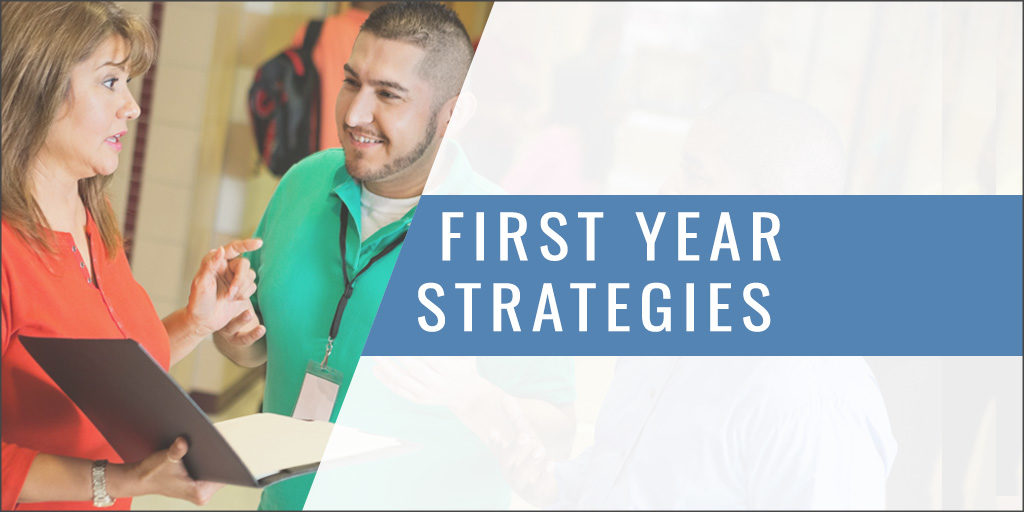| The "Rookie" Season: |
| Strategies for Managing the First Year on the Job as a High School Athletic Administrator |
|
By: Gary Stevens, CMAA Throughout the United States today, athletic administrator positions continue to turn over at a rapid rate. The all-encompassing nature of the work, the hours required to manage an education-based athletic program, and the pressure associated with serving diverse personalities with divergent agendas are among the factors leading to this phenomenon. As many of the nation's athletic directors make the transition into other roles in their schools or retire altogether, more and more people with limited or no previous experience in the profession are assuming these jobs. An athletic administrator's first year in his or her new role is the most challenging one. Although many people filling these positions have received preparation in leadership or sports management in graduate programs, the rhythm, pace, and demands of the opening weeks on the job are eye opening and jaw dropping. In many ways, the real education of an athletic director occurs on-the-job. Help Only a Phone Call Away The most important lesson learned by most athletic directors in their first year in their positions is that a key to their personal longevity and the successful administration of their programs is networking. Today very few schools operate their athletic programs independently. League affiliations are necessary for scheduling purposes and qualification for postseason play. For most individuals in the profession, their conference colleagues prove to be their initial contacts in performing their responsibilities and oftentimes end up being their closest friends and confidantes. Those same peers, particularly seasoned veterans with many years of service under their belts, can prove to be valuable resources for the novice athletic director. They have two assets - craft knowledge and experience in a wide range of situations - that may prove useful to a rookie colleague. Forming personal and professional relationships with these individuals is essential. Learning from the example of their successes - and mistakes - is among the best training that an aspiring athletic leader can receive during the opening months on the job. First-year athletic directors should not shy away from the impulse to pick up the telephone and contact a colleague when they are looking for sage advice on handling a challenging matter or need a specific resource. People who work in education-based athletics are not by nature hoarders who hide trade secrets from their contemporaries; they are usually open and willing to assist any athletic director who has a question. The success of their athletic programs depends, in large part, upon communication and cooperation with others in the profession. Sharing best practices and exchanging ideas with others about topics ranging from contest management to crowd control to addressing coaches behavior only helps to provide a positive experience for all student-athletes, including their own. Many conferences and state athletic administrator associations offer mentoring programs that link veterans and newcomers in both formal and informal ways. In some scenarios, training sessions that include a written curriculum (and an opportunity for continuing education units) are part of those offerings. First-year athletic administrators should take full advantage of these opportunities when presented to them. In addition to the valuable networking experience that is incorporated into these programs, having a forum to articulate ideas, exchange information, and ask context-specific questions of others can have a positive impact. Contextual Clues and the Transition Plan Thomas "Tip" O'Neill, the legendary Speaker of the United States of Representatives during the 1980's, was once quoted as saying that "all politics is local". When it comes to performing one's duties in a high school athletic setting, the same concept applies. First-year athletic administrators should remember that there is no "one size fits all" approach to the work; leadership strategies and approaches that may be applicable in one setting may be doomed to fail in another. Having a sense of the place in which he or she works should be on or near the top of any first-year athletic director's checklist and must be a component of his or her transition plan. Individuals leading athletic programs in school settings should dedicate time and energy to learning as much as possible about the community, the school environment, and the athletic culture in which they work. He or she should carefully examine all previously developed written materials (e.g. student handbook, coaches handbook, school website) to understand the school's rules and expectations. Establishing relationships with key school and community members is an important pathway to reading the local landscape. Among the most valuable resources that may supply information and answers about local sports culture include any of the following:
Athletic administrators should listen carefully to these voices and try to understand the core values and traditions that define a school. One must always remember that, in most cases, the person sitting in the athletic director's chair is only a temporary caretaker of a program and tradition that predate him or her. Although it may be tempting or even prudent to make immediate or drastic changes in a school's methods of operating its athletic program, it may prove challenging to do so if they run contrary to a system's mores. Documenting and journaling are strategies that may assist a novice in his or her first year in a position. As a means of fully understanding the context in which one works, it is helpful to take notes during meetings with key players in the organization. Reviewing those notes periodically is a valuable exercise, particularly during the first weeks of employment when vast stores of new information are being received on a regular basis. New athletic administrators must also familiarize themselves with any league or state athletic association regulations that may directly impact their programs. Included among the most important exercises that all athletic administrators, including first-year leaders, must undertake are:
Formalized Training in Education-Based Athletics In addition to the important day-to-day lessons that can be learned from one's athletic director colleagues and co-workers, the value of formalized training in education-based athletics is at a premium, particularly in the first year in a school setting. New athletic administrators should embrace the opportunity to become members of their state athletic director associations and take advantage of the professional development programs, including state conferences, offered by those organizations. State athletic director groups are powerful mechanisms for forging new connections, learning from experienced peers, and gaining access to information about best practices. Many state athletic director groups also incorporate dual membership with the National Interscholastic Athletic Administrators Association (NIAAA) and the member benefits offered by that organization. The NIAAA has a wide range of programs that cater to the needs of first-year athletic directors. Core courses offered within the NIAAA Leadership Training Institute include information about best practices and are taught by peers in both live and webinar format. These same courses, combined with electives covering a variety of specific topics related to the field, can be utilized to gain certification within the national organization and are also recognized for certification endorsement in selected states. In addition, a number of universities and colleges have articulation agreements with the NIAAA or use its materials for both undergraduate and graduate degrees. The Case for Wellness The work of the athletic director in today's American high school has taken on an expanded dimension in recent years. Despite economic challenges of recent years, many schools have actually added sports programming to the fold, which in turn, has widened the umbrella of responsibilities that an athletic leader covers. Athletic administrators often possess organizational skills and other attributes to a school that becomes attractive when new initiatives are in the air; many of the country's athletic directors would describe their roles as "add-on" positions. Many schools have lights or artificial turf facilities, thus extending the length of the workday, particularly during the fall and spring seasons. An expanded number of night games means that many athletic administrators have to make critical decisions and actions after several hours on the job (when their fatigue level may be high). Combined with the general stress associated with the job, the impact of this work on an athletic director's health can be profound. Given these challenges of time and responsibility, first-year athletic directors must not forget to attend to those personal needs that create mental and emotional balance and promote personal health. Among those areas that cannot be neglected are:
From the first moments on the job, first-year athletic administrators should strive to establish solid consistent routines that meet these essential personal wellness needs. One's performance on the job is directly tied to his or her physical, mental, and emotional health. The future of the profession depends upon the professional development and institutional support of a group of first-year athletic directors. The key to this effort remains those currently serving in these positions; today's athletic directors must embrace this challenge and carry out that mission. By establishing specific programs at the local, state, and national levels to teach the fundamentals of administering education-based athletics and using human connections to generate a tighter professional network, today's athletic leaders can develop a foundation for this next generation. IAA -------------------------------------------------------------------------------------------------------------------
ABOUT THE AUTHOR: |








